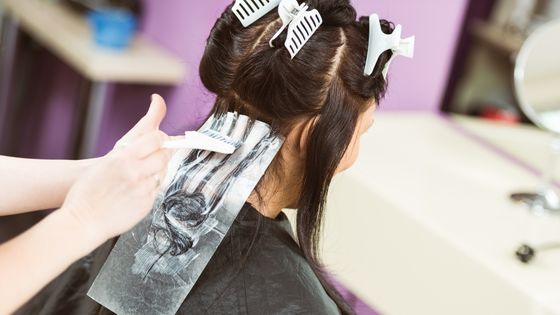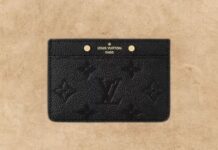If you’re tired of the same old routine, a new hair color might be just what you need! If you’re worried about getting sick at the salon or just don’t want to spend a lot of money on your hair, you can always do a DIY hair dye session at home instead. Do yourself a favor and pick up the box dye, a bowl, and a brush, and get started!


Here are a few pointers to help you get the snapchat-worthy results you want from your next at-home hair dye session.
Is it safe DIY hair dye?
The majority of the time, colour your hair at home is completely safe, provided that you follow the guidelines on the product’s label carefully. Let’s get started with some tips on how to dye your hair at home like a pro!
Tips for the Better Results
1. Find the Shade: Look for colors that are similar to your current color at the store to get the best match. Boxed dyes are often organized on a shelf in a specific manner: by color. On either side of your hair, apply one of the following two tones that are near to your best professional hair color on either side.
2. Buy Enough: You don’t want to run out of dye in the middle of the process, so make your preparations ahead of time. In the case of hair that is shoulder length or longer, you may require two boxes to cover your full head. The number of boxes you will require will be determined on the thickness of your hair. If you end up with a few of excess boxes, you may either save them for future use or return them to the store where they came from.
3. Strand Test: Despite the fact that it is simple to omit the strand test, it is critical, especially when attempting a new color for the very first time. First, color a few chopped or hidden hairs and then study the results before making a final selection on your hair color. Hair that turned orange and purple is a common horror story from testers who didn’t follow the directions carefully.
4. Protect your Skin: Having distinct colored stripes across your forehead when you wake up is the most embarrassing thing that can happen. Before applying color, apply clear solid lip balm along your hairline and around your ears to avoid stains from forming on your lips. This is preferred to using an oil-based salve to protect skin against stains, such as a goopy salve, to prevent stains from forming.
5. Setup Tools: Consider yourself a surgeon, and prepare your tools on the counter beforeyou begin working. Before you begin, make sure you have read the associated instructions. You’ll be clear on the procedures and won’t have to stop in the middle of the process, which could result in blunders such as leaving the dye on for too long or leaving parts uncoloured.
Other Tips Before Dying Hair
1. Dye on Dry Hair: Hair color specialists (as well as the instructions on the packaging of the best professional hair color) recommend that you dye your hair when it is dry. When hair is drenched with water, it is possible that the dye will not adhere to the hair strands or will get diluted, resulting in an undesired outcome.
To maintain a healthy scalp and hair, gray hair should not be colored with the best hair dye for gray for more than every four weeks. Dyeing too often with the best hair color to cover grey hair color to become brittle, dull, and damage your hairline.
2. Start at the Root: You should start with the roots of your hair while dying it. Because they are the first place where hair regrowth develops and the least damaged area of the hair, they require the most color and the longest processing time. Allow the best professional hair color to develop for the amount of time specified on the packaging’s instruction manual. If you don’t want to end up with a two-toned look, then comb it through the rest of your hair. Work in four to six areas, similar to how salon professionals do it.
3. Two Mirror is Good: It can be challenging to color the back of your head. As you color, use a handheld mirror to check the back of your head in the bathroom mirror to ensure that you don’t miss any areas of color.
4. Use Shower Cap: Wearing a disposable shower hat over your head will help to keep the color from dropping while it is processing.
5. Avoid too much Water: It’s the first rule for preserving color. Water, not shampoo, is the primary cause of hair color fading. Dye molecules can drain out of your hair every time it is saturated, whether you use shampoo or not. Chlorine, salt, and other elements in water can raise the hair’s cuticle, increasing the loss of color.
6. Use Colour safe products: No shampoo is completely color safe since all shampooing necessitates wetting the hair, and water itself is a dye-removing agent. Even though sulfate free shampoos are supposed to be more effective at slowing color loss, experiments have revealed that they are not always considerably better than shampoos containing sulfates.
7. Avoid sun damage: Keep your hair out of the sun (or cover it with a hat) to prevent it from lightning. The sun acts like a bleach, dissolving not only artificial color but also the melanin that gives natural hair its pigmentation, breaking down both. Consequently, UV protection is equally crucial for your hair as it is for your face. Given that there is no such thing as sunscreen for hair, it’s best to cover it with a hat or a scarf when you’re going to be out in the sun for an extended amount of time, such as at the beach.
Bottom Line
Rather than making drastic changes to your hair color, at-home hair dye should be about maintaining the shade that has been custom-designed for you by colorists. Colorists do not recommend doing this yourself because it is extremely difficult to position and can result in tiger stripes if done incorrectly. When applying home hair dye, however, stick to the area around your face where you can see and control the color.

























